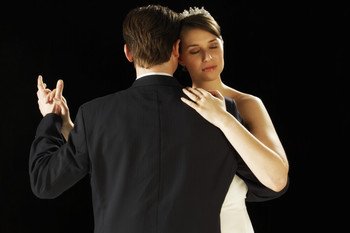The city council decided Monday night to consult downtown
businesses about dancing and how exactly the city should regulate
grooving in the name of safety.
The city council decided Monday night to consult downtown businesses about dancing and how exactly the city should regulate grooving in the name of safety.
Violent crime associated with alcohol-fueled dance halls was a real concern during the 1990s, and residents incorporated this fear into the 2006 Downtown Specific Plan. Along with zoning regulations, the plan permits dance clubs only in commercial districts and a small portion of the downtown, and only with a special permit reviewed by police. Any business in a commercial zone can host a one-time dance with a special permit under city law.
The council minus Mayor Al Pinheiro, who was absent Monday night due to business, was forced to consider the dance issue yet again after one local developer complained that the officer in charge of issuing dance permits was threatening downtown cafes and bars with citations and license revocations unless they stopped patrons from impromptu dancing. The officer, Sgt. Kurt Ashley, has vehemently denied this.
“I’ve had complaints that the city police department has too much power … that we sort of just make up our own rules and impose things,” Police Chief Denise Turner told the council Monday night as Ashley sat in the background. “We’re not in the business of going to the corner coffee shop and busting people.”
Much of the council’s conversation Monday night revolved around the Gaslighter Theater and other nearby entertainment venues that lie in different downtown zones, only two of which allow dance halls. Sue’s Coffee Shop sits one block north of the Gaslighter at the corner of Fifth and Monterey streets in the city’s “historic core” and regularly hosts live music, but the cafe cannot legally host a dance without a special permit. However, fewer than three hundred feet away, at the Fire House Bar and Grill, a business could open a dance hall under local law. City Attorney Linda Callon informed council members that even if a dance develops that is “incidental to the (business) use, if it’s public dancing, they need a permit.”
Defining the threshold between an impromptu dance involving a handful of people (which police said they do not plan to regulate) and a jostling crowd of hundreds is what the council wants to hear from businesses about.
“We are your enforcers, ” Turner told the council, “but if somebody just stands up and starts dancing, we’re not going to get a call for service, number one, and we’re just not going to go there and proactively shut anyone down.”
City Administrator Tom Haglund also stressed that city officials reached out to the community earlier this decade and found “a host of reasons” that contributed to depreciated property values, “not the least of which would’ve been dancing,” he said. Turner also said she would “have a problem” if hundreds of people showed up to spectate “a rock band” and started dancing and creating havoc.
Police claim that’s what happened in May at the Gaslighter near the corner of Sixth and Monterey streets. The business operates as a theater and restaurant and has hosted everything from plays to a world-renown Flamenco guitarist. The May incident stemmed from the venue’s first concert – “It was not a dance!” stressed owners Mark and Susan Gaetano in a recent letter to the editor – when police responded to calls and arrested two attendees for vandalism. Police also took reports in the area of public drunkenness and fighting, according to Sgt. Kurt Ashley. No arrests were made on the Gaslighter’s property.
Despite frustration over police thinking the event was an illegal dance from the get-go, the Gaetanos have since worked with authorities and have had no problems or incidents since then, they said. Either way, Councilman Peter Arellano said it was necessary to make the law “plain so police (are) able to do their job.”
James Suner – the developer who revived this issue with allegations that Ashley threatened to cite people for dancing – did not speak much Monday night but did say police were “trying to over-regulate” dancing.
“If we start enforcing obscure municipal codes on a letter of the law basis, I’m not sure I want to live in Gilroy anymore,” he said.
He pointed to a weekend night recently at the Westside Grill near the corner of Santa Teresa Boulevard and First Street, where he witnessed a couple dozen people dancing.
“It’s true,” Councilman Perry Woodward said with a nod Monday.
Downtown Developer Gary Walton cautioned people from pointing the finger at the Gaslighter and said the most successful downtowns revolve around entertainment and events and described dancing “as one of the oldest forms of human expression.”
In the end, the council directed staff to consult with downtown businesses to form more sophisticated dancing regulations. However, the council did not specify how this should be done or when the project should be completed.













